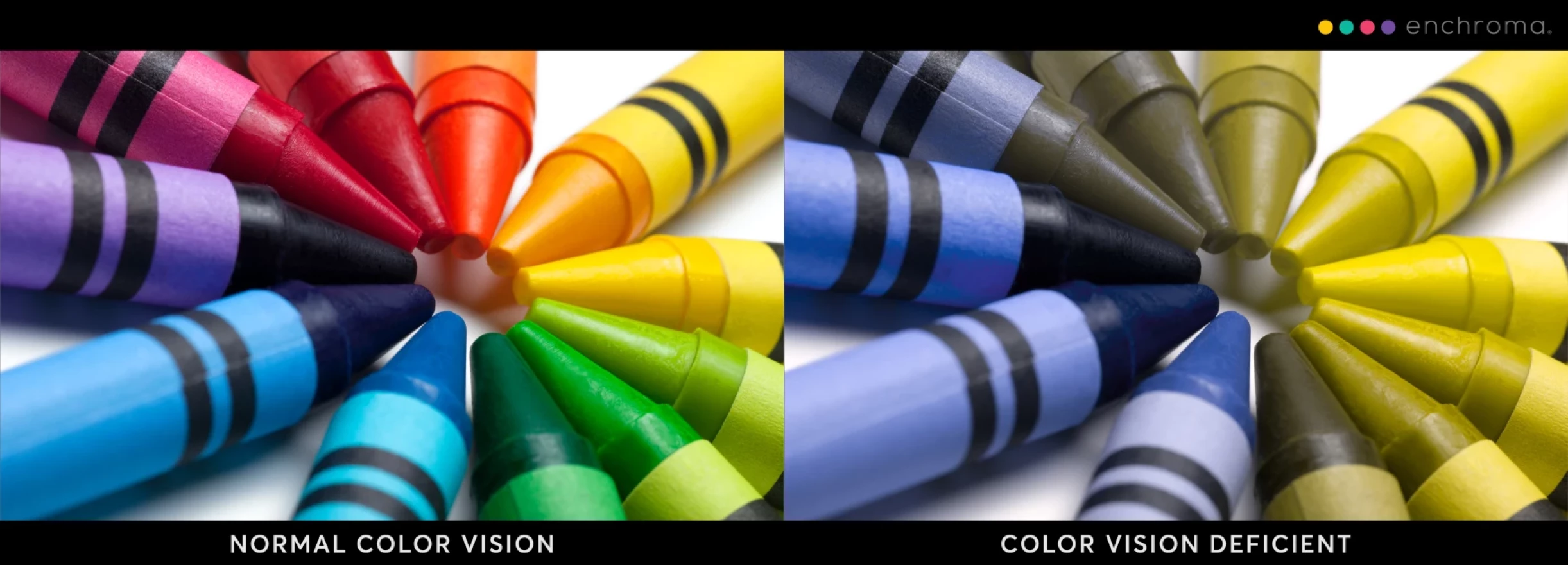Some visitors to two of Michigan’s state parks will see something they’ve never fully seen before: the brilliant reds, oranges, and yellows of fall.
About one in every 12 men is colorblind, and one out of every 200 women is. That's about 425,000 people in Michigan who cannot see about 90% of the hues and shades visible to the rest of the population. Some colors are indistinguishable. For many with colorblindness, reds look brown. Green seems sort of brown or gray. A northern cardinal’s red might not stand out against the green tree leaves.

A few years ago, Tennessee Tourism approached a company that made eyeglasses that helped people with colorblindness see much more of the color spectrum. They wanted to make things more accessible.
“To see the changing of the leaves in the fall in the Smoky Mountains in particular,” said Kent Streeb, vice president of communications and partnerships for EnChroma.
EnChroma had already been looking into whether it could insert a lens in scenic viewers — those telescope-meets-binocular things you see at some parks.
“We’ve thought of a lot of different applications, one of which is scenic viewers,” Streeb said.
Since then, eleven states have also decided to install the altered viewers.
If parks have a compatible scenic viewer, the cost of getting the EnChroma lens added in is about $500. A brand new enhanced scenic viewer is about $1,400.
In Michigan, the Friends of the Porkies paid for the special lenses for some of the scenic viewers at the Porcupine Mountains Wilderness State Park in the western Upper Peninsula.
John Pepin is with the Michigan Department of Natural Resources. He was at the unveiling of the enhanced scenic viewers. Guests who are colorblind were invited to try them out. One man was astounded to see colors he had never seen before.
“He was starting to tear up because it was just so shocking to him,” Pepin said.
You can see the reactions of people with colorblindness looking through scenic viewers with EnChroma lenses for the very first time in a video the Tennessee Department of Tourism produced here.
The Porcupine Mountains Wilderness State Park has three sites with the new kind of scenic viewers.
“For people with normal color vision the viewers, and EnChroma glasses, will make colors 'pop' more if they look through the viewer or wear the glasses, but not in a distracting or surreal way. Colors will simply look more vibrant and stand out a bit more, which people enjoy,” Streeb said in a follow-up email.
At Ludington State Park, a friends of the park group suggested the installing scenic viewers adapted for colorblindness there. Park staff thought it would be a great addition and placed it on a trail that has expansive views.
“Over the years through feedback from the [Michigan Department of Natural Resources'] Accessibility Advisory Council, passion and fundraising from local state park friends’ groups and a commitment of improving existing facilities from park planners and managers, the DNR has made significant strides to improve amenities and facilities for people of all abilities,” said Dan Lord in a news release from the DNR.
The agency indicates it’s likely certain other parks will have the enhanced scenic viewers in the near future.
EnChroma said that in some states tourism groups and libraries are considering buying eyeglasses that correct color for people with colorblindness to lend them or rent them to visitors.

